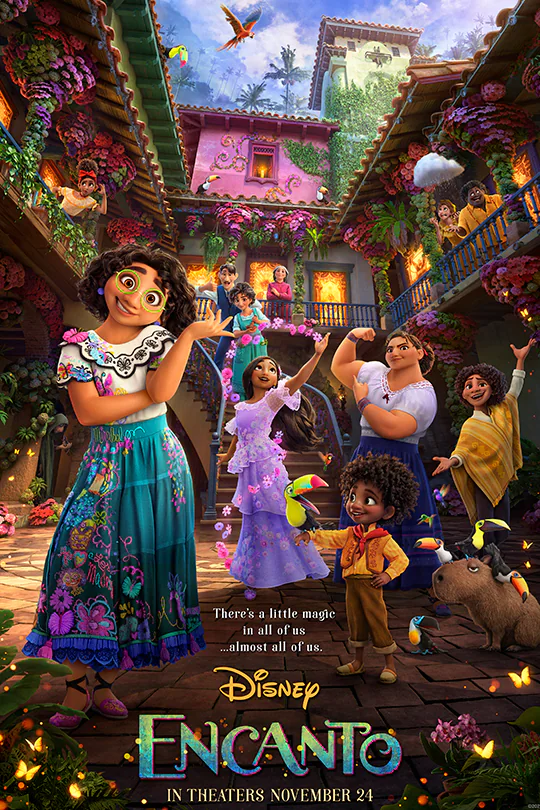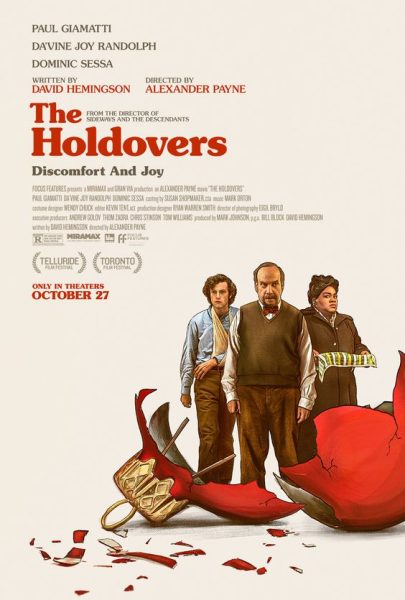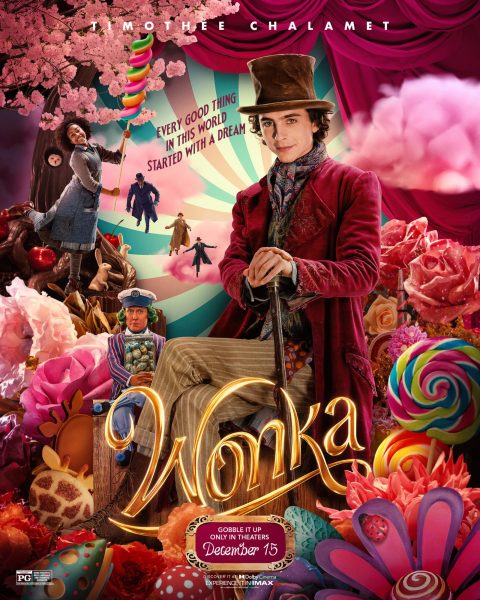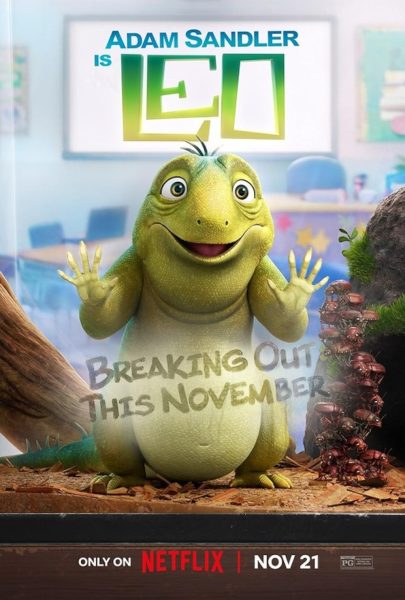Disney’s Encanto dances with bursts of color and sound that outshine the lackluster plot

More stories from Natalie Mix
Encanto was released in theatres on Nov 24 and is the fifth Walt Disney Animation Studios film to explore Latin American culture, according to IMDb.
I possess a few consistent personality quirks—ordering a Shirley Temple every time my friends and I go out to eat, buying beverages I know I’ll hate just because the packaging is pretty, or refusing to watch most movies without checking the IMDb Parents Guide first.
The latter is an unfortunate detail. I love everything about the movie-watching experience—the popcorn, the ambiance—besides the fact that most of them scare me too much. My safe space for movies, despite seventeen years of hoping I’d grow out of it, is still comfortably within the realm of Disney films.
Disney’s newest film, Encanto, was not only nestled perfectly into this safe space, but it also promised an elixir of entrancing elements: components of magical realism, a female lead, rich and splashy animation, and original songs by Lin Manuel Miranda.
Encanto tells the story of the Madrigal family, who live in a magical house in the hills of Colombia. Each member of the Madrigal family has been blessed with a magical gift, except for Mirabel (voiced by Stephanie Beatriz). But when the family’s magic is mysteriously threatened, “ordinary” Mirabel may be the family’s only hope at saving it.
The trailer had me at the opening notes.
But while Encanto over-delivered on its promises of bright hues and dance-y action, it under-delivered on the plot, and the climax had me searching for a missing piece.
Perhaps my own expectations are to blame—I can’t expect a movie targeted towards kids to reach the pinnacle of complexity and depth—but in every other way, Encanto was stunning and groundbreaking, proving that it had the capabilities to be more, and Disney has produced classic tales with far more intensity and magnetism in the past.
Fortunately, because Encanto shone in so many other arenas, the plot managed to weakly fade into the background.
From start to finish, the film was a visual masterpiece. The vivid and sparkling animation completely demolished the standards that Disney had previously established for itself. There was barely a moment that the screen wasn’t occupied by splashes of color in every manner of creativity, and when the colors dulled for the sake of ambiance, they were replaced by a dim eeriness.
“Surface Pressure” possessed that indefinable quality in a song that makes me want to scream a little bit, something that gently prickles at a part of my brain that can only be awakened by a very specific type of music.
As my friend aptly pointed out as we left the theatre, Encanto revolved around its music, clearly designed to be a musical by someone who knew what they were doing. Each musical number was a jewel set into the resplendent background of the film, painting varying degrees of otherworldly scenery and infectious dance routines, but nothing compared to “Surface Pressure.”
Oh, “Surface Pressure.” I think I’d go see the whole movie again just to watch that number one more time.
“Surface Pressure” possessed that indefinable quality in a song that makes me want to scream a little bit, something that gently prickles at a part of my brain that can only be awakened by a very specific type of music. While certain lines from a few other songs on the soundtrack managed to have a similar effect, none of them had me hitting my friend’s knee in the theatre like “Surface Pressure” did.
It featured an ever-changing landscape of stunning imagery, and it revolved around Mirabel’s older sister, Luisa (Jessica Darrow), who absolutely shatters the stereotype of “the character with super strength.” She is buff and muscular, but she wears dresses and dances and doesn’t reject the classically “feminine” qualities that many “tomboy” female characters do.
While there’s not necessarily anything wrong with that portrayal of women, having another type of “strong” female character represented on the screen was refreshing to say the least.
On a variety of levels, Disney made multiple steps in the right direction with Encanto.
The film featured an entirely Latin American cast of characters, with most of the voice actors being Colombian-born or of Colombian descent. This representation is exceedingly important for young Latin American children who don’t often get to see characters who look like them portrayed on the screen—but deserve to as much as anyone else.
With all that there is to celebrate about Encanto, I’m disappointed that I can’t rave about the plot. There was so much potential to work with in every other aspect of the film, but unfortunately the climax truly fell flat, and although the resolution was warm and fluffy and laced with themes of unconditional love and acceptance, it lacked the oomph that it might have had following a dynamic peak of action.
Nonetheless, there’s a near 100% likelihood that I will drag another friend along to see this movie—perhaps even before it leaves theatres, but more likely once it hits Disney+—even if it’s primarily because I can’t get enough of the show-stopping “Surface Pressure.”

Natalie Mix is a senior taking on her fourth and final year as a member of The Central Trend. Room 139/140 and the staff of The Central Trend have been...































































































Ella Moxon • Dec 7, 2021 at 9:24 am
Omg I am so smart and adept